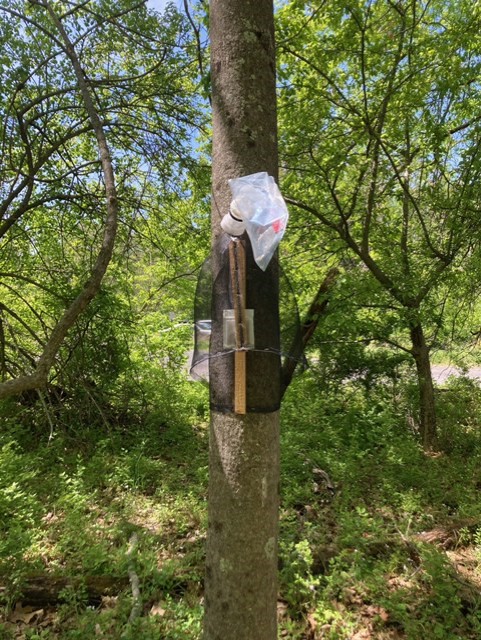Monitoring for Spotted Lanternflies

Spotted Lanternfly trap monitored by USDA APHIS
The Spotted Lanternfly (SLF) (Lycorma delicatula) is an introduced leaf hopper insect that is rapidly spreading across the MidAtlantic states. As it is a serious pest of agricultural crops and selected woody plants, the USDA APHIS (Animal and Plant Health Inspection Service) has an active monitoring and control program. APHIS has set up a trapping station in the EcoPreserve – so if you come across it please let it alone as it is helping to control the spread of this noxious pest.
These circle traps are used to both catch and monitor SLF populations from May-October. Compared to similar sticky traps and jar traps, these circle traps have proven to be more effective at knocking back SLF. The trap uses a methyl salicylate lure to attract the insects and a kill strip to finish the job. An Ailanthus tree is the preferred host of SLF, therefore these trees are commonly chosen for these traps. It is serviced once every two weeks and the lure in changed once a month.
This post was submitted by Casey McCardle, an USDA APHIS employee and RU SEBS alum. For more information on SLF
https://www.aphis.usda.gov/aphis/resources/pests-diseases/hungry-pests/the-threat/spotted-lanternfly/spotted-lanternfly